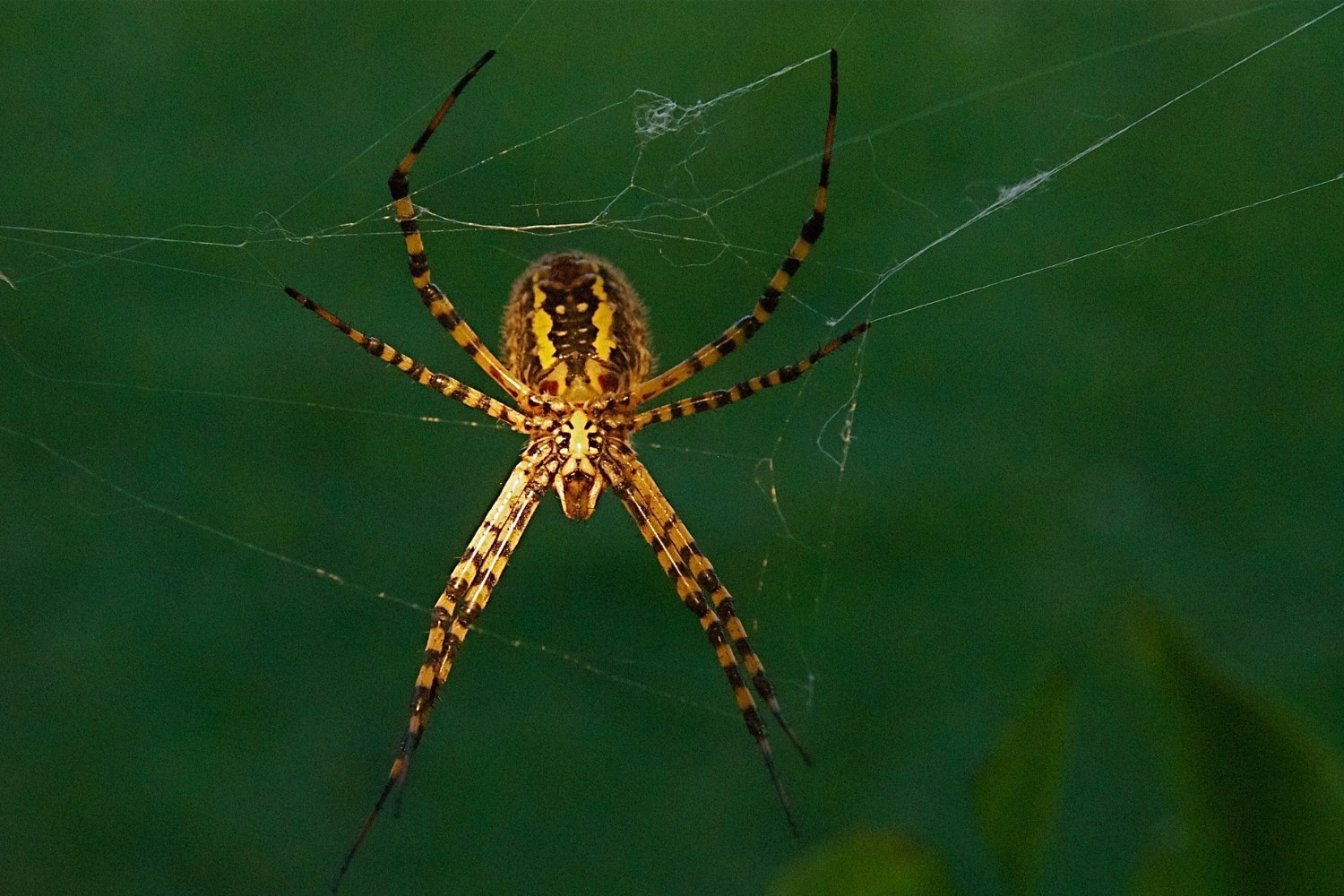
The banded garden spider, scientifically known as Argiope trifasciata, is a fascinating arachnid that can be found in gardens and wooded areas across North America. Known for its distinctive markings and impressive web-building skills, this spider is a favorite among nature enthusiasts and photographers alike. In this article, we will explore ten extraordinary facts about the banded garden spider that will leave you in awe of this remarkable creature. From its vibrant coloration to its intricate web design, the banded garden spider is a true marvel of the animal kingdom. So, let’s dive in and uncover the intriguing world of the banded garden spider!
Key Takeaways:
- Banded Garden Spiders are colorful, patient predators that play a vital role in garden ecosystems by controlling pest populations and are not aggressive towards humans.
- Female Banded Garden Spiders are larger than males, can change color, and can live for over a year, showcasing their adaptability and unique characteristics.
Vivid Coloration Makes It Stand Out in the Garden
The Banded Garden Spider (Argiope trifasciata) is known for its striking appearance. With its black and yellow or orange and white banding, it easily catches the eye amidst the greenery of the garden. The vibrant coloration serves as a warning to potential predators, signaling that it may be toxic or unpalatable. The distinct markings also help to camouflage it within its natural habitat.
It Weaves Intricate Orb-Webs
The Banded Garden Spider is a master weaver, constructing large, circular webs that are intricate and precisely crafted. These orb-webs can span up to one meter in diameter and are woven with strong silk threads. The spider strategically positions itself in the center of its web, waiting patiently for prey to become entangled in its sticky strands.
Females Are Significantly Larger Than Males
In the world of Banded Garden Spiders, size matters. Female spiders are considerably larger than their male counterparts. While females can reach a body length of up to 2.5 centimeters, males typically range between 0.5 to 1 centimeter. This size difference is thought to be beneficial for mating, as the smaller male is less likely to be mistaken for a threat or a potential meal.
The Banded Garden Spider Is a Patient Predator
When it comes to hunting, the Banded Garden Spider exemplifies patience. It remains motionless in the center of its web, relying on vibrations to detect approaching prey. Once a potential meal becomes ensnared, the spider swiftly immobilizes it with a venomous bite. The venom not only paralyzes the prey, but also begins the process of digestion.
It Spins Egg Sacs for Offspring Protection
The Banded Garden Spider displays exceptional maternal instincts. After mating, the female produces one or more egg sacs, which she carefully weaves and attaches to her web. These sacs serve as protective chambers for the developing spiderlings. The female defends the egg sacs diligently, ensuring the survival of her offspring until they hatch.
Banded Garden Spiders Can Live for Over a Year
While many spiders have relatively short lifespans, the Banded Garden Spider can live for over a year. This longer lifespan allows for multiple breeding cycles and ensures the continuity of the species. It also gives these spiders ample time to establish and maintain their webs in garden habitats.
They Are Not Aggressive Towards Humans
Despite their formidable appearance, Banded Garden Spiders are not aggressive towards humans. They are non-venomous to humans and pose no significant threat. These spiders generally prefer to retreat and avoid confrontation rather than engage in defensive behavior. However, it is always advisable to exercise caution and avoid direct contact with any spider species.
They Play an Essential Role in Garden Ecosystems
Banded Garden Spiders play a crucial ecological role in garden ecosystems. As predators, they help to regulate populations of insects and other small invertebrates. By trapping and consuming various pests, they help maintain the balance within the garden environment. Their presence is a natural form of pest control that can be beneficial to gardeners.
The Female Banded Garden Spider Can Change Color
Interestingly, the coloration of the female Banded Garden Spider can vary depending on its environment and surroundings. In some cases, it can adapt its body color to match the local vegetation, enhancing its camouflage and making it less detectable to predators and potential prey.
They Are Found Across North America
The Banded Garden Spider can be found throughout North America, spanning from southern Canada to northern Mexico. It is a common sight in gardens, meadows, and open woodlands. Their adaptability to a range of habitats contributes to their wide distribution across the continent.
Conclusion
The banded garden spider is truly a remarkable creature. From its unique coloration to its intricate web-building skills, this spider has many extraordinary characteristics. Its ability to control prey populations and its role in maintaining ecosystem balance make it an invaluable member of the animal kingdom. The banded garden spider’s beauty, strength, and adaptability are a testament to the wonders of nature.
FAQs
Q: How big do banded garden spiders grow?
A: Banded garden spiders can grow up to 1.5 inches in body length, with females being larger than males.
Q: Are banded garden spiders venomous?
A: Yes, banded garden spiders are venomous, but their venom is generally not harmful to humans. Their bite may cause mild symptoms such as redness and swelling.
Q: What do banded garden spiders eat?
A: Banded garden spiders primarily feed on insects, such as flies, mosquitoes, and grasshoppers, which they catch in their intricate webs.
Q: How long do banded garden spiders live?
A: The lifespan of banded garden spiders is usually one to two years, with females often living longer than males.
Q: Where can banded garden spiders be found?
A: Banded garden spiders are commonly found in North America, particularly in gardens, fields, and forests where they can build their webs.
Q: Do banded garden spiders have any predators?
A: Yes, banded garden spiders have predators such as birds, wasps, and other spiders that may feed on them or their eggs.
Q: How do banded garden spiders reproduce?
A: After mating, female banded garden spiders lay hundreds of eggs and encase them in a silk sac. The sac is then placed in the spider’s web for protection.
Q: Can banded garden spiders bite humans?
A: While banded garden spiders have the ability to bite humans if they feel threatened, they typically do not bite unless provoked.
Q: Are banded garden spiders beneficial to the environment?
A: Yes, banded garden spiders play an important role in controlling the population of insects, helping to maintain the balance of ecosystems.
Q: How can I attract banded garden spiders to my garden?
A: Providing a diverse range of plants and flowers that attract insects can help attract banded garden spiders to your garden as a natural pest control method.
Was this page helpful?
Our commitment to delivering trustworthy and engaging content is at the heart of what we do. Each fact on our site is contributed by real users like you, bringing a wealth of diverse insights and information. To ensure the highest standards of accuracy and reliability, our dedicated editors meticulously review each submission. This process guarantees that the facts we share are not only fascinating but also credible. Trust in our commitment to quality and authenticity as you explore and learn with us.


